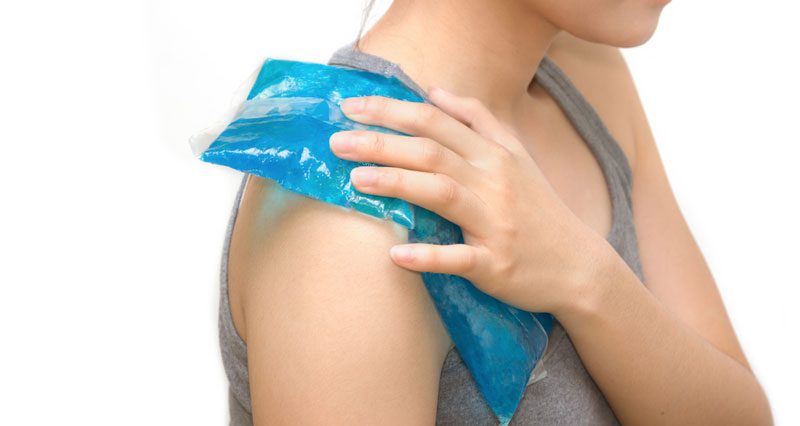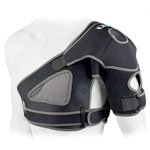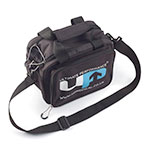All acute and chronic shoulder injuries should be treated using the P.R.I.C.E. therapy principles of protection, rest, ice, compression, and elevation. This should be applied at home for at least the first 2 – 3 days.
What are the PRICE principles?
Protection
Protection of the damaged tissue is vital to prevent further damage and enable the healing process to start efficiently and effectively. There are a number of ways to protect the injured area, all with the aim of limiting further movement. One way this can be achieved is by using a sling or splint.
Rest
In the early stages, rest is one of the most important components of the P.R.I.C.E principle but is often neglected or ignored. It does not only refer to the prolonged period of time that the athlete will be out of action but also to the immediate period after the injury.
You must know when to stop training and allow the injured area to heal otherwise repetitive minor injuries can often result in a more severe injury.
Do not be tempted to ‘run it off’ – this implies that by continuing to exercise, your injury will simply go away. In the majority of cases, it won’t!
Ice
- Cold therapy (cryotherapy) is one of the most widely known and used treatment modalities for acute sports injuries. It is cheap, easy to use and requires very little time or expertise to prepare
- The application of ice to an injury, in the acute phase, can substantially decrease the extent of the damage.
- It achieves this in a number of different ways
- Decreases the amount of bleeding by closing down the blood vessels (called vasoconstriction)
- Reduces pain (pain gate theory)
- Reduces muscle spasm
- Reduces the risk of cell death (also called necrosis) by decreasing the rate of metabolism
- Ice is usually applied to the injured site by means of a bag filled with crushed ice which is wrapped in a damp towel
- The damp towel is essential as it forms a barrier between the bag of ice and the skin and reduces the risk of an ice burn
DO NOT leave the ice on for more than 15 minutes as you could cause an “ice burn”.
There are a small number of areas that you should not apply ice to which include:
- Neck
- Collarbone (upper end)
The reason for this is there is a superficial nerve just below the skin in these areas that can be damaged by applying ice to it. Always check for contraindications.
Compression
- Applying compression to an injured area minimises the amount of swelling that forms after an injury and should be applied for the first 24 to 72 hours from the onset of the injury
- Compression is not quite so easy on the shoulder joint but an elastic bandage can be used to wrap and support the shoulder joint in the early stages
Elevation
- Elevation of the hand is the final principle of PRICE but is a little more difficult to do with the shoulder










